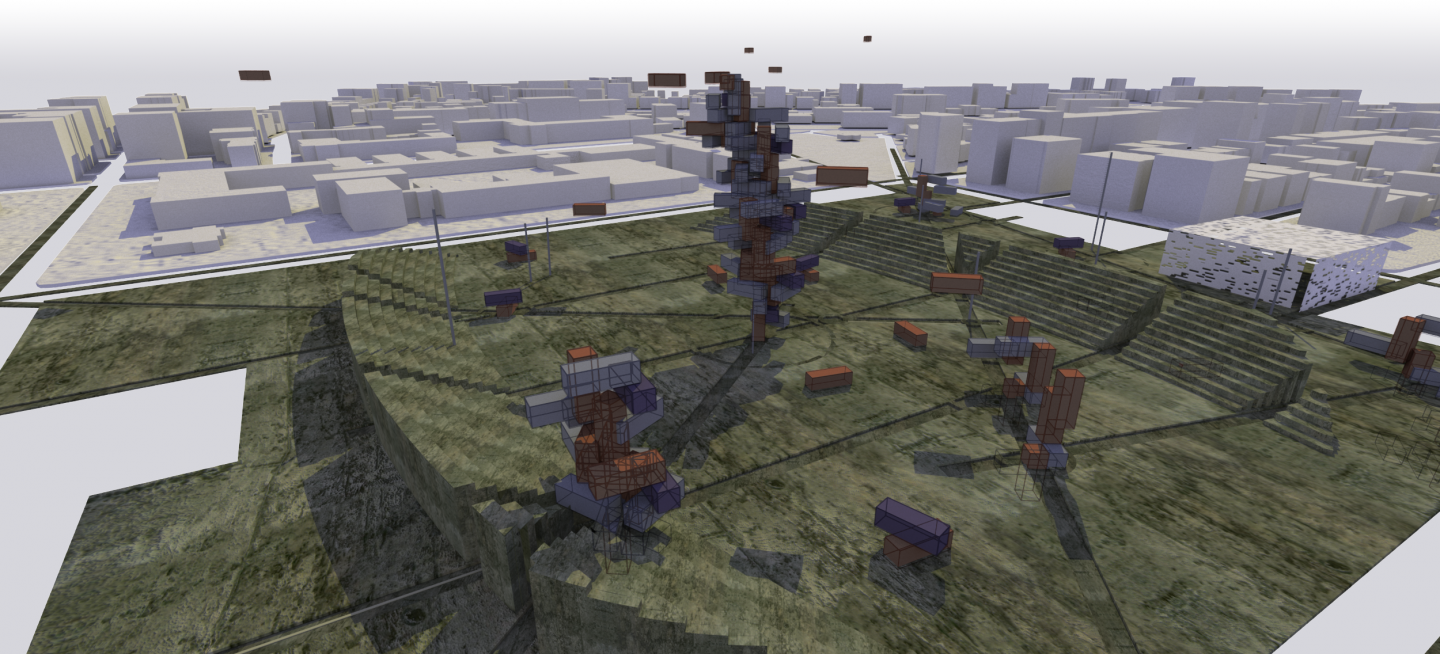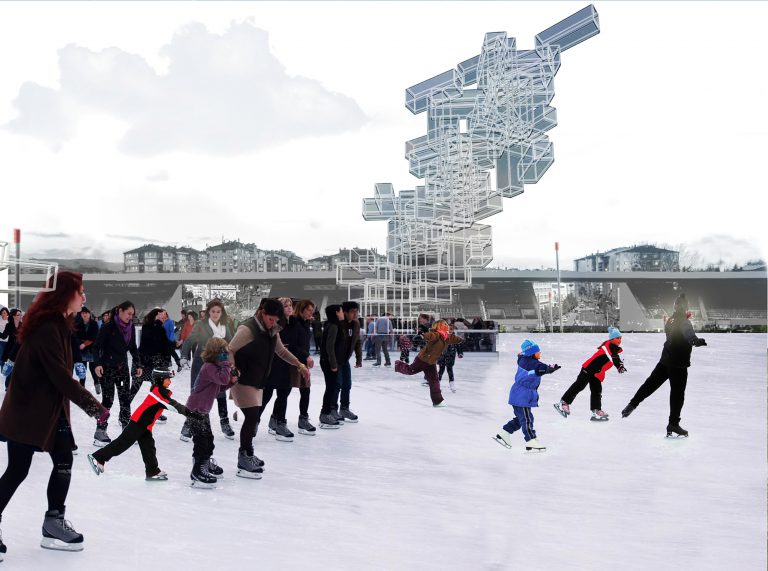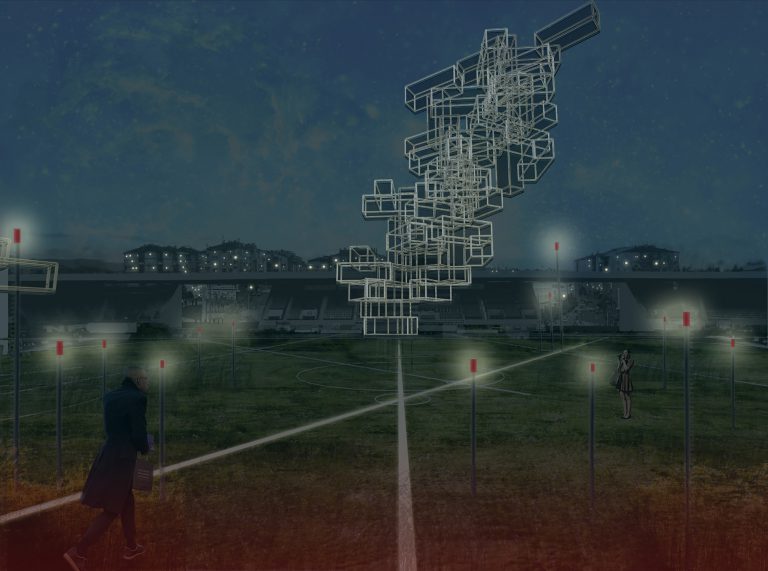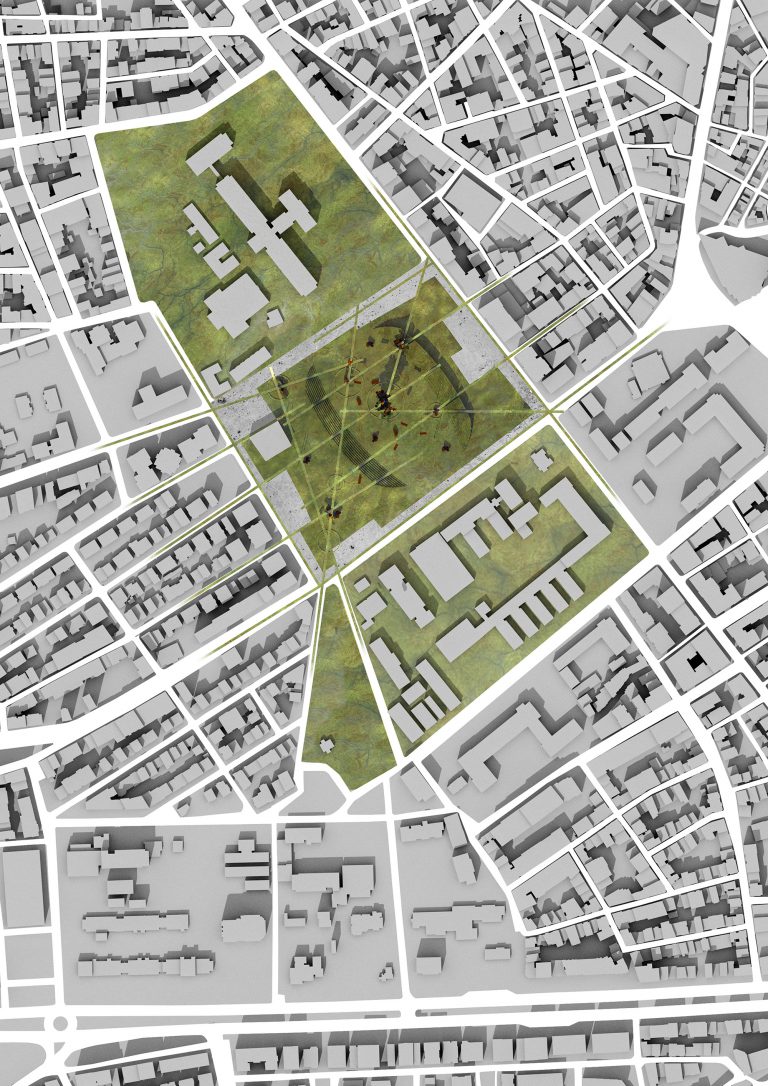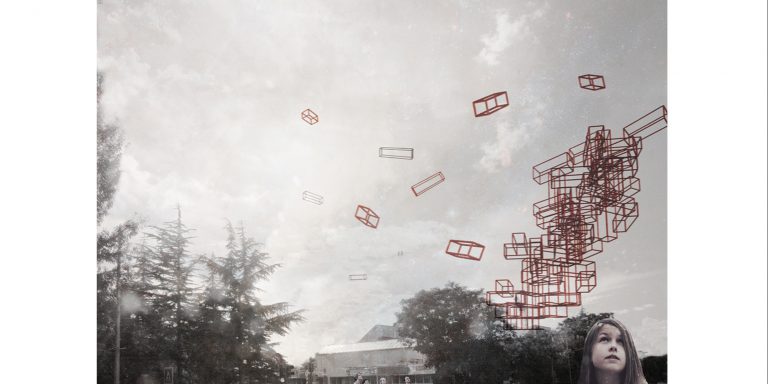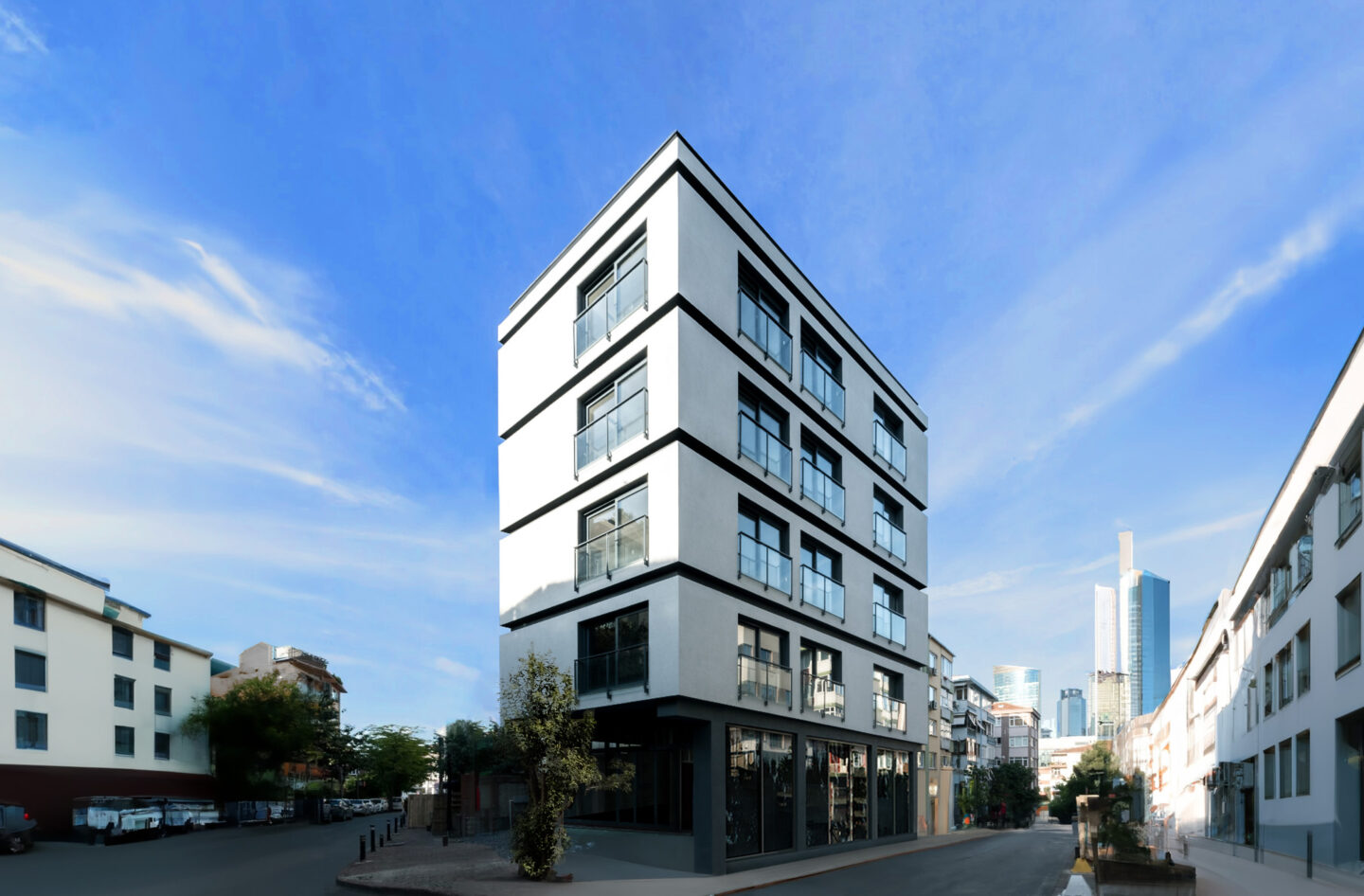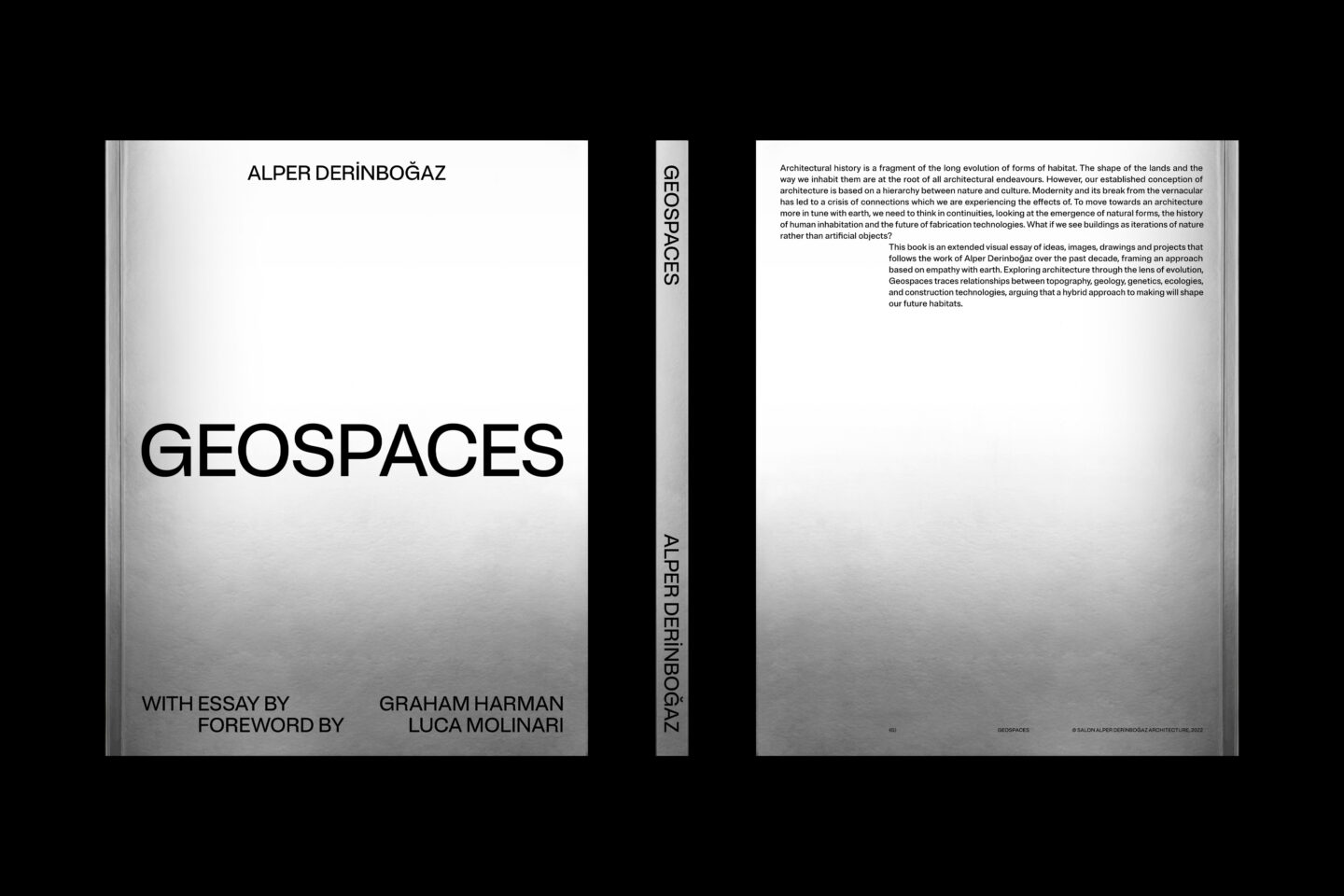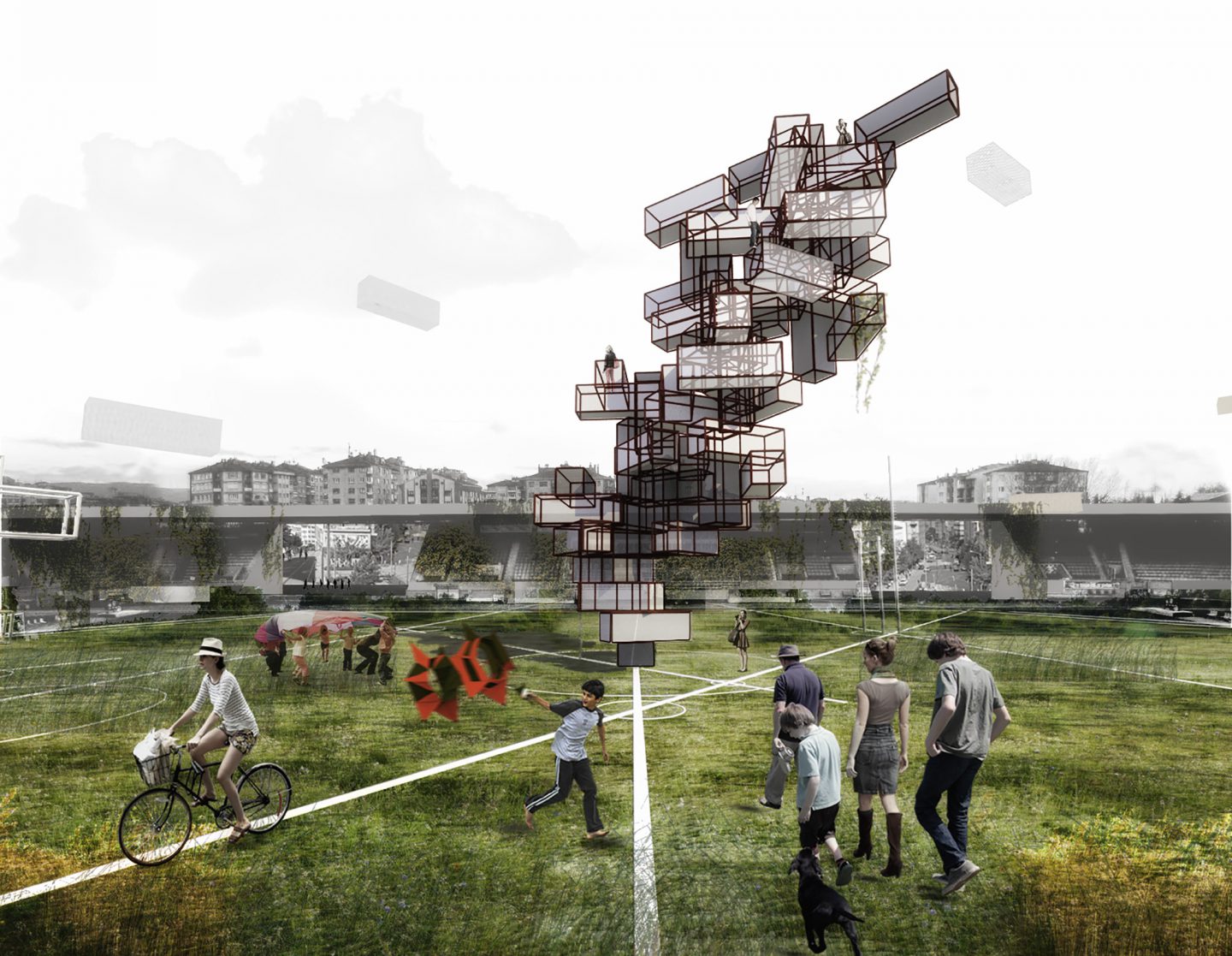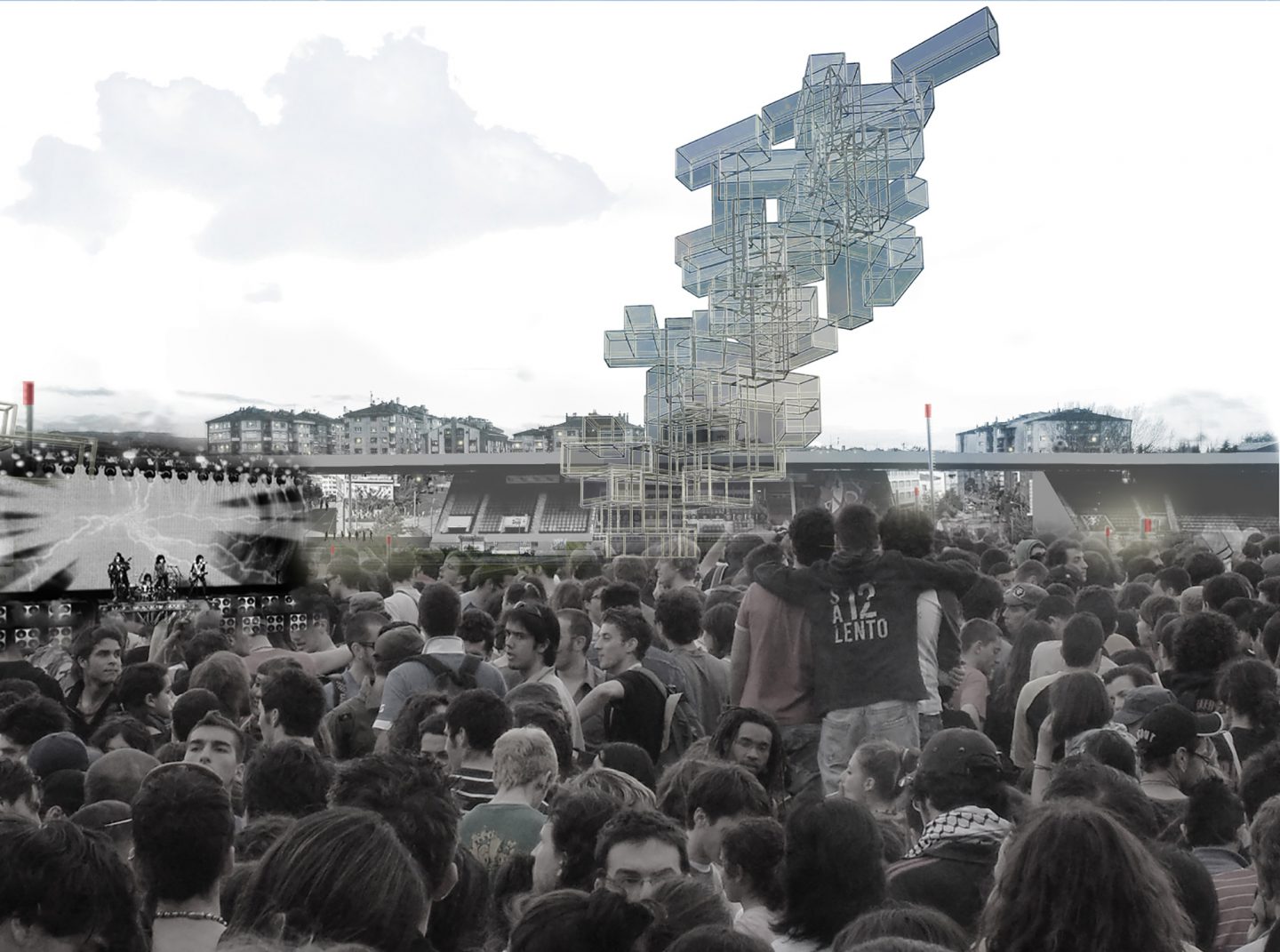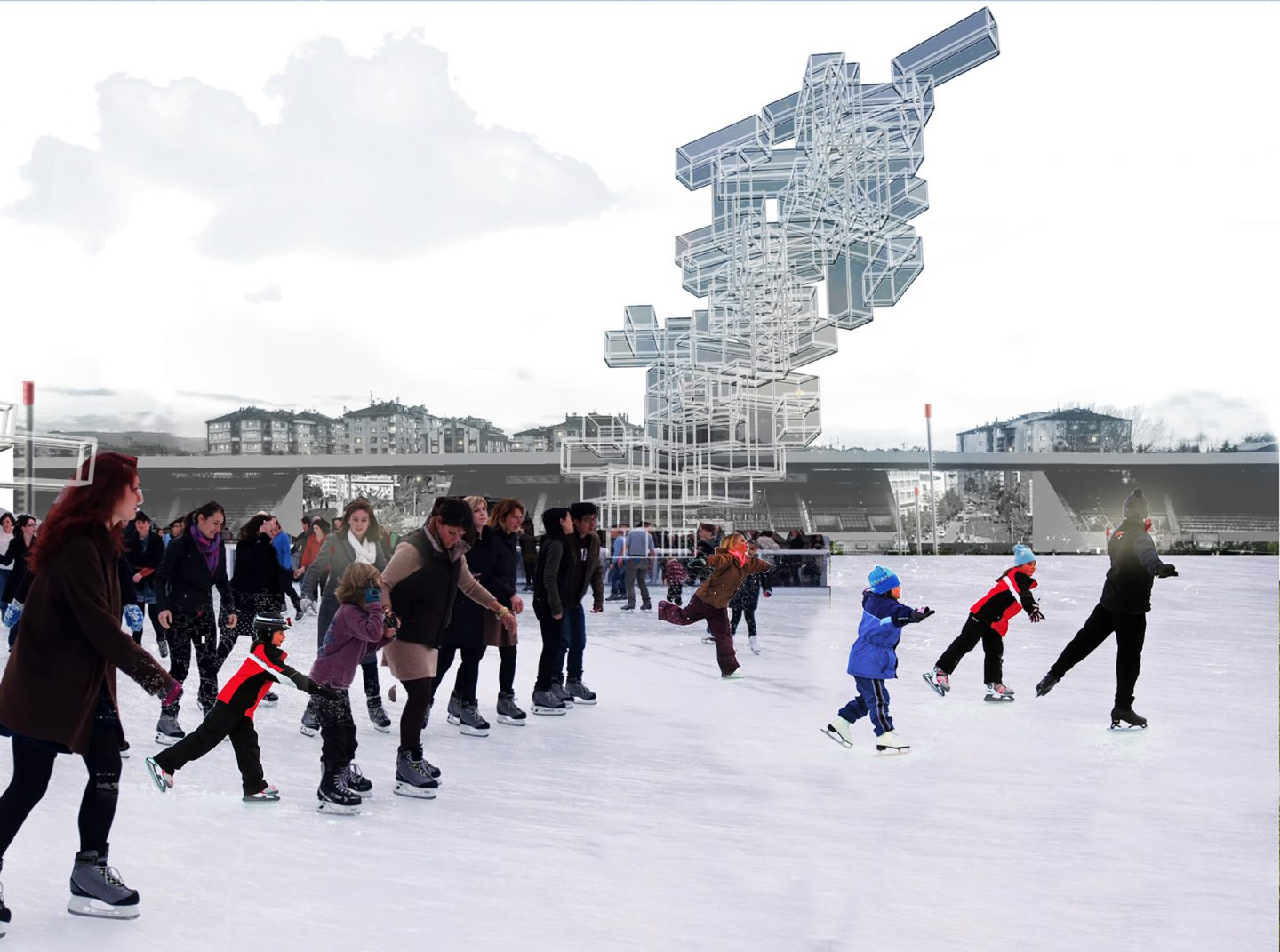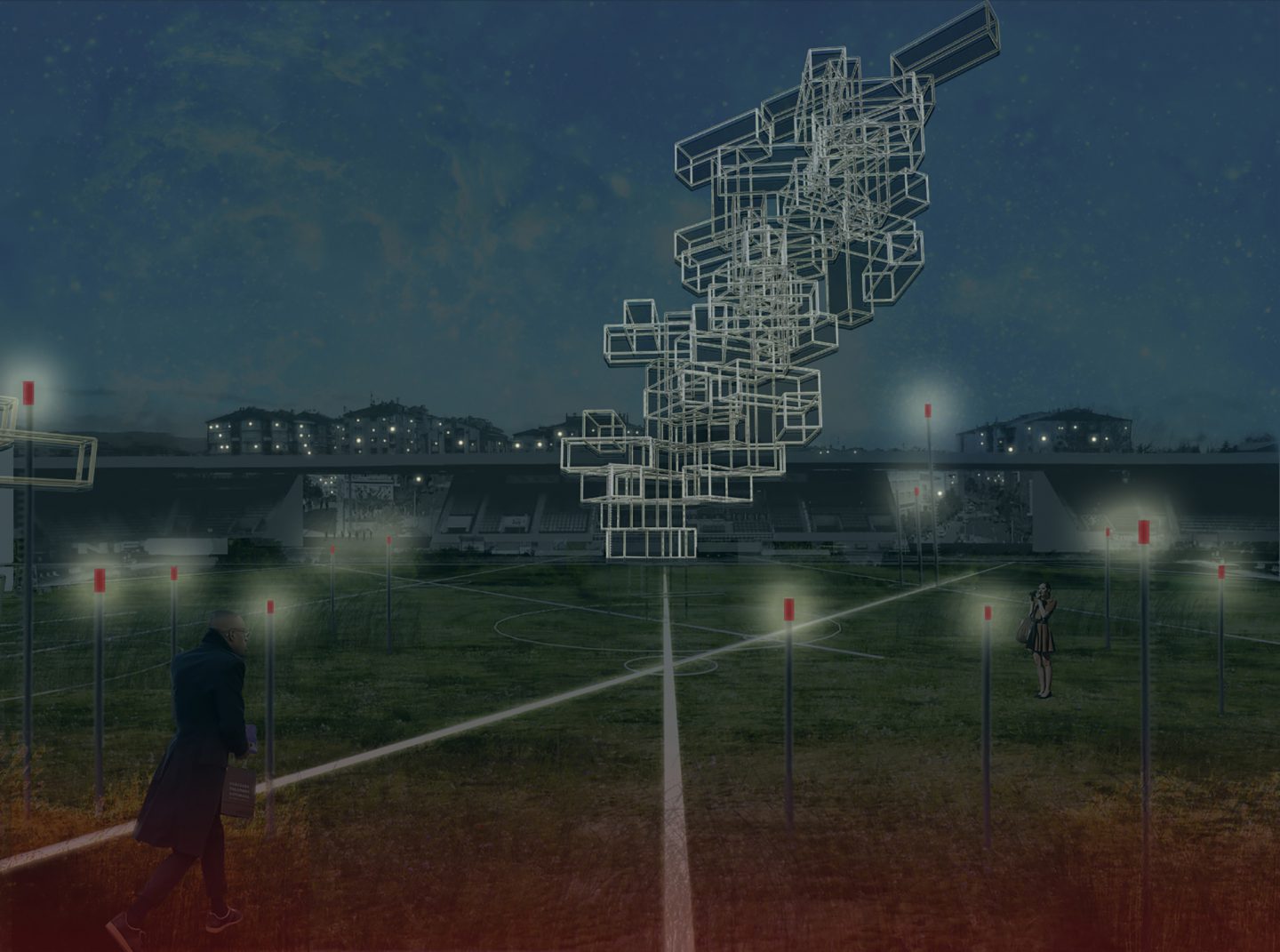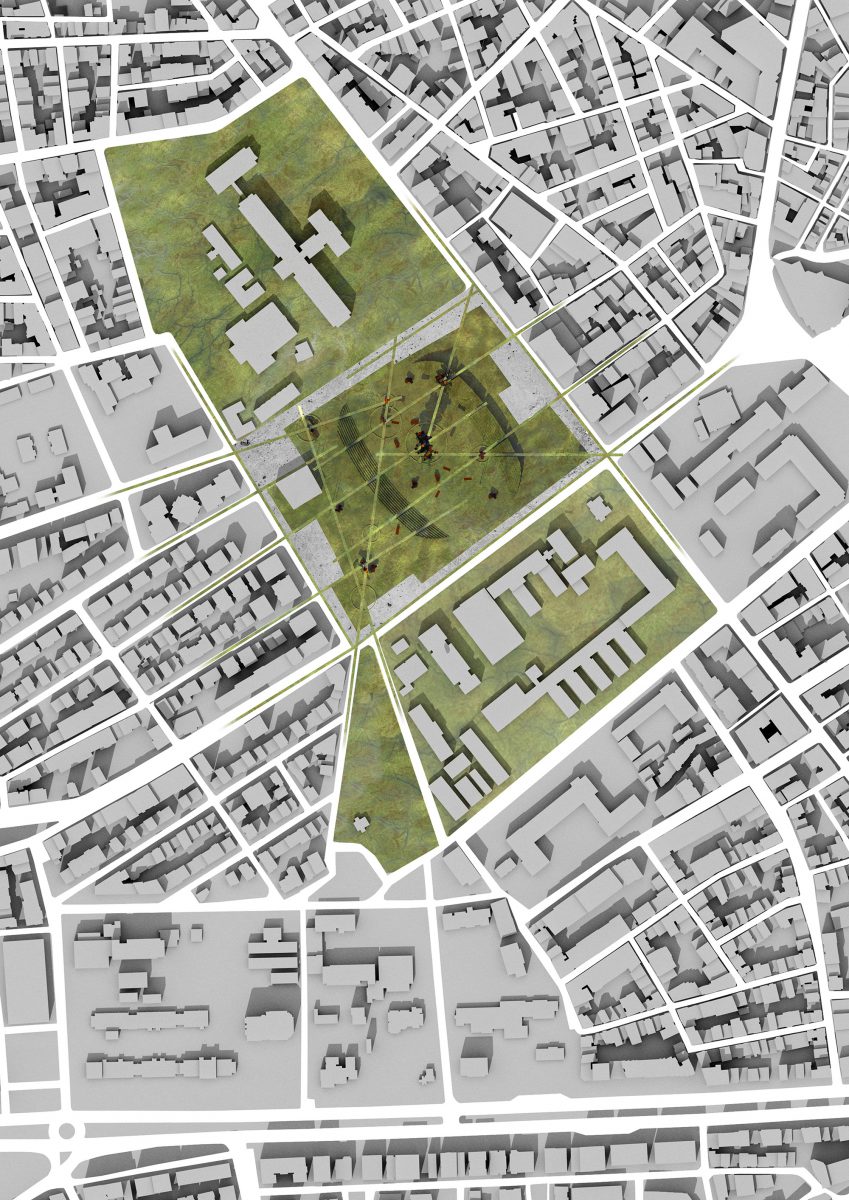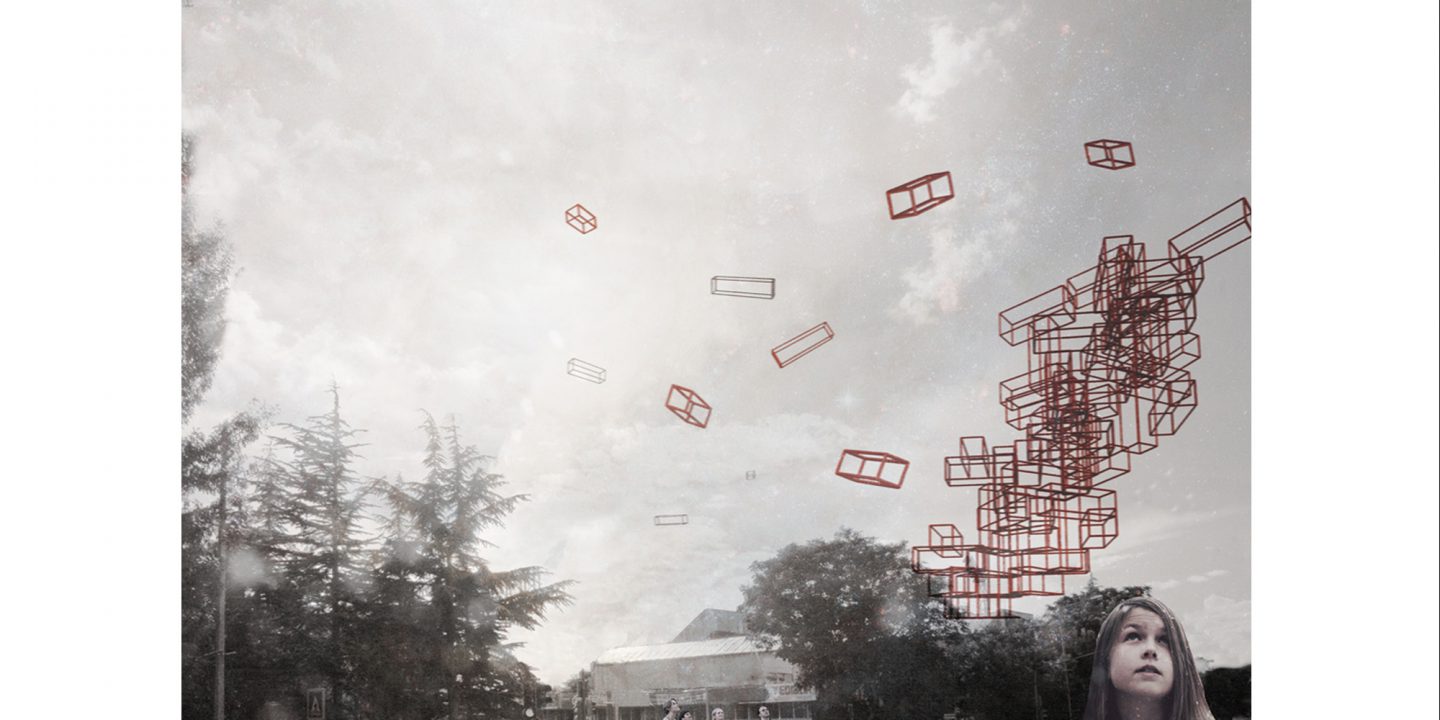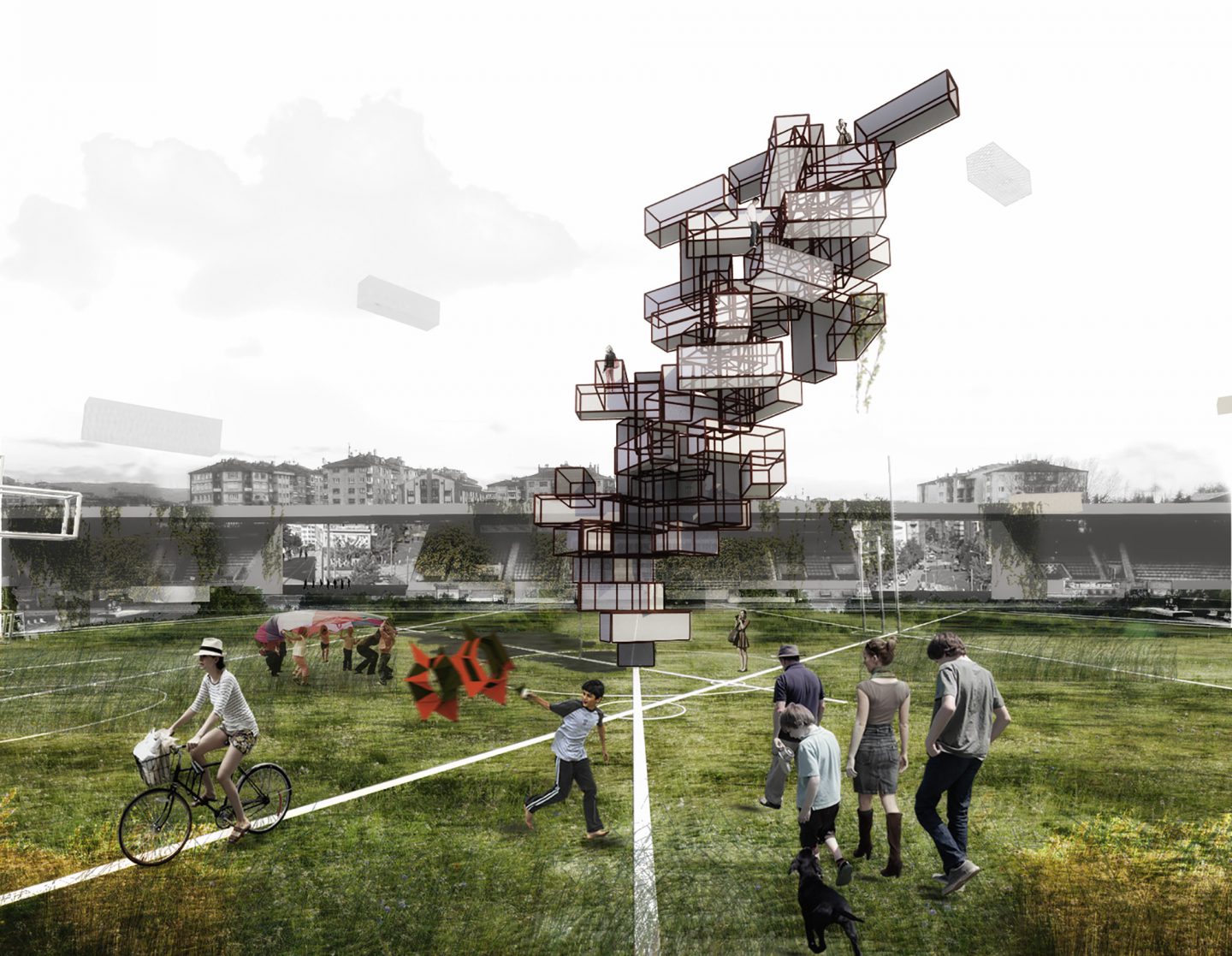
Pollination Plaza is an award-winning competition project proposed for Eskişehir Square (Eskişehir Meydanı), one of the largest public spaces in Turkey. ‘Ideas for the Former City Stadium Competition’ expected designs for the valuable empty space to remain behind the relocation of the old football stadium. The project is based on a fictionalized urban myth imagined for after the relocation of the stadium, which is to be moved to the urban periphery. The proposal is the phenomenon itself, and a possible public scenario that follows it.
Pollination is the process by which pollen is transferred from the male part of a plant to the stigma (female part), thereby enabling fertilization and reproduction. This takes place in the angiosperms, the flower bearing plants. This natural process of reproduction has inspired the proposal, and allowed us to imagine an extraordinary incident as a reproduction and fertilization event of the public space. Moreover, a telepathic interaction between the functions has been conceived.
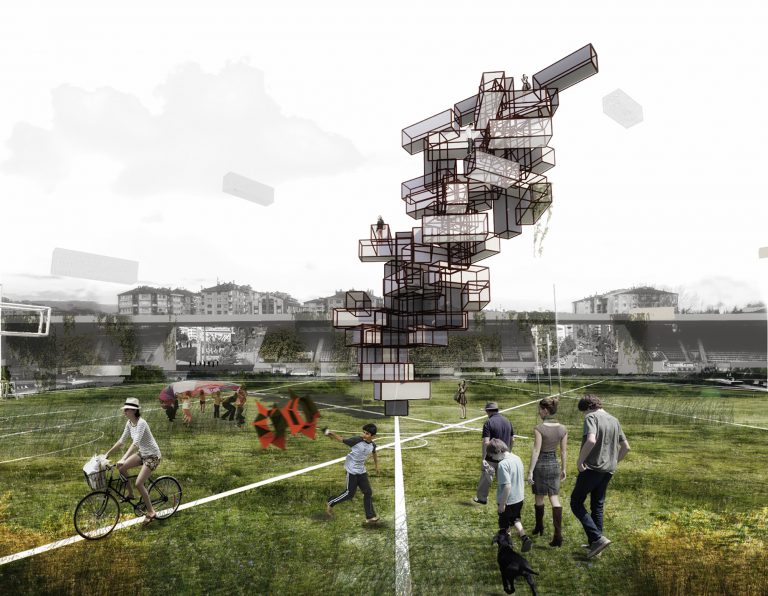
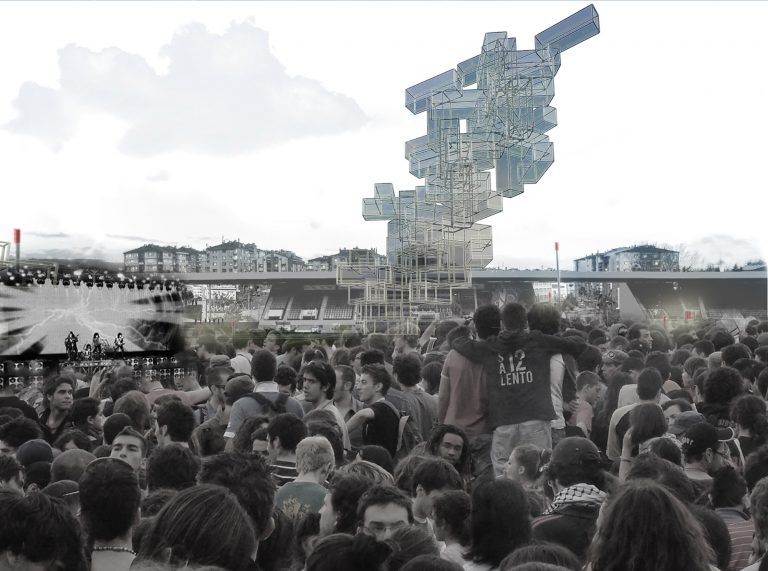
THE INCIDENT AS AN URBAN MYTH and ALTERNATIVE PUBLIC SPACE MODEL
Eskişehir, a city in the Anatolian part of Turkey, witnesses an extraordinary incident in early 2015. Football goalposts all around the city suddenly start to rise from the ground, astonishing the public. After a while it becomes clear that the goals are heading to the old stadium, where football is no longer played. The goals stop flying by, gathering in the middle of the stadium and leaving a massive structure behind. The startling incident is accepted as a mystery, but on the other hand it leads to a spontaneous design event. The citizens, especially the youth, protect this special zone by occupying the land and forming an organizational structure to sustain it. At the beginning, they don’t allow the urban managers to interfere until the land becomes a living public park that offers a free space for everyone.
The proposal includes an organizational network scheme, a list of possible events, and a scenario that can make the public space happen and sustain it. This spontaneity-based public space is how we think a livable public space needs to be.
